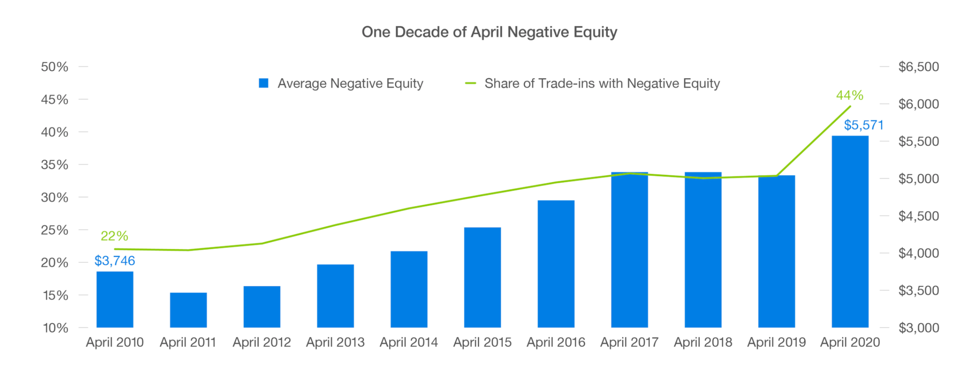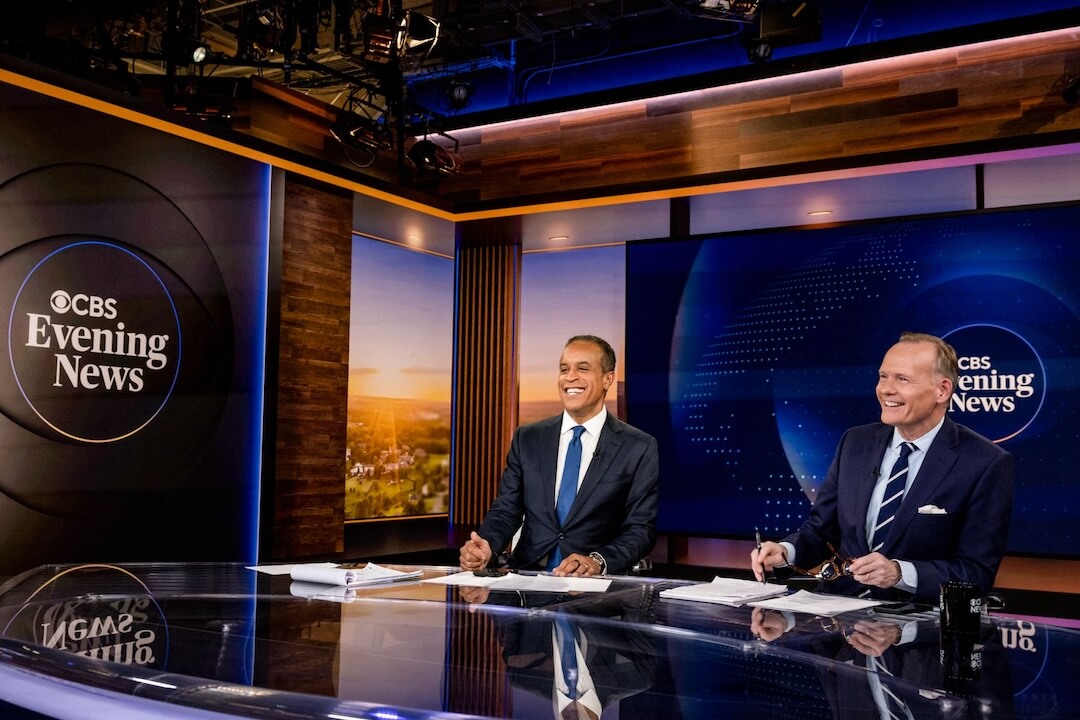 Covering COVID-19 is a daily Poynter briefing of story ideas about the coronavirus and other timely topics for journalists, written by senior faculty Al Tompkins. Sign up here to have it delivered to your inbox every weekday morning.
Covering COVID-19 is a daily Poynter briefing of story ideas about the coronavirus and other timely topics for journalists, written by senior faculty Al Tompkins. Sign up here to have it delivered to your inbox every weekday morning.
Now is a pretty good time to sell your used car and not so great a time to buy one.
Buyers are flooding the used-car market, looking for deals amid high prices for new vehicles, low interest rates and a shortage of new-vehicle inventory, according to car-research site Edmunds.
The average listing price of used vehicles was $21,558 in July, up $708 from June.
“This is an unprecedented historical shift in the used vehicle market, where listing prices typically decrease during this time period due to depreciation,” Edmunds said.
Here is some illuminating data from Edmunds:
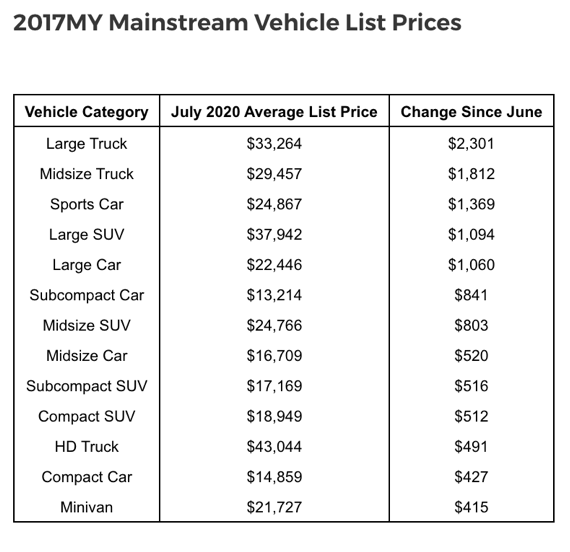
(Edmunds)
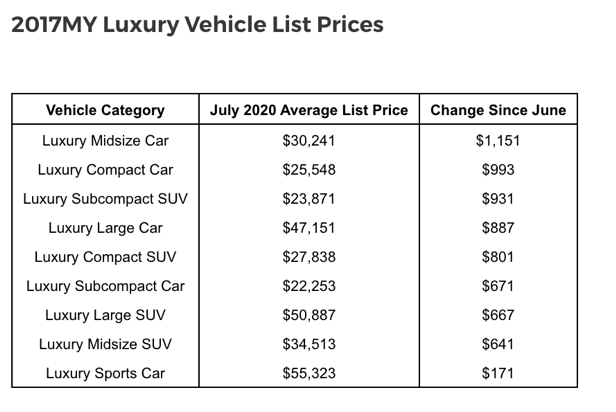
(Edmunds)
The Detroit Bureau, which covers the auto industry, said:
“Thanks to a shortage of new vehicle inventory, more automakers and dealers have leaned into promoting attractive certified pre-owned programs, which might be driving more typical new car shoppers into the used market,” said Jessica Caldwell, Edmunds’ executive director of insights.
There are other reasons. Interest rates for used cars dropped since the pandemic began, and The Detroit Bureau said:
One thing that may be helping on the used car front are stimulus checks. According to Edmunds, the average used down payment on a used car rose to $3,167 in June, marking the first time it’s ever eclipsed $3,000 since Edmunds began tracking that data in 2007. It’s also $500 more than just one year ago.
AutoWeek said Hertz will soon flood the market with 200,000 used cars that it must shed as part of its bankruptcy case.
A record number of car owners owe more than their cars are worth
While digging around on the above story, I tripped across this one in Edmunds’ data:
April 2020 set a record with 0% finance deals accounting for 25.8% of dealership-financed new vehicle purchases, and many of these loans carried a term length of 84 months. These low-interest, long-term loans are receiving mixed reactions from financial advisers, auto industry critics and consumers — just about everyone has an opinion on the subject. However, there is another aspect to these loans that draws even more ire: loans with negative equity.
Two other records were shattered in April 2020. The share of new sales with a trade-in involving negative equity hit 44%, and the average amount of negative equity reached $5,571 — both all-time highs. These figures aren’t reflective of incremental change or a broader, more gradual trend: The data shows an abrupt spike in negative equity.
You might think, given the state of the economy, that people might be shopping for less expensive cars. But Edmunds found that car buyers now are paying $5,000 more for cars than they were a year ago. Because interest rates are lower, and in some cases zero, monthly loan payments are about the same as in 2019.
Grocery prices are rising fast
My wife and I work at a food pantry once a week and yesterday, lots of people told me they can’t believe how much grocery prices seem to be rising. It is not their imagination.
The cost of groceries has been rising at the fastest pace in decades since the coronavirus pandemic seized the U.S. economy, leading to sticker shock for basic staples such as beef and eggs and forcing struggling households to rethink how to put enough food on the table.
Long-standing supply chains for everyday grocery items have been upended as the pandemic sickened scores of workers, forced factory closures and punctured the carefully calibrated networks that brought food from farms to store shelves. Even while some of the sharpest price hikes have eased somewhat, the overall effects are being felt most acutely by the nearly 30 million Americans who saw their $600 enhanced unemployment benefit expire last Friday — exacerbating concerns that the recession’s long tail could worsen food insecurity for years to come.
The most recent U.S. Agriculture Department data said since February, beef and veal prices are up 20.2%, egg prices are up 10% and both poultry and pork prices rose 8%. Now, compare those prices to a year ago and beef prices are up 25% while egg prices are up 12%.
At our food pantry, people were really happy that we included a dozen eggs in each grocery bag we handed out. (Incidentally, I kept an informal count and about a third of the people were restaurant workers who were back at work but were earning so much less in tips.)
To track specific food items or categories, you can turn to the Consumer Price Index, which is updated monthly. As much as people talk about beef prices rising, I think it is interesting that both potato and hot dog prices are up more than 12% in the last year. I wonder why?
Stock prices for gun manufacturers are up after the New York AG lawsuit against NRA
Anytime it looks like something might interrupt gun sales, gun prices, ammo prices and stock for gun manufacturing companies rise. It happened Thursday when the New York attorney general filed a lawsuit seeking to dissolve the National Rifle Association because it allegedly diverted millions of dollars from charitable work to personal use by senior officials.
Stock in Smith & Wesson, Sturm, Ruger & Co. and other gun-related companies rose on the news.
Analysts say the regulatory environment is among the biggest drivers of demand for guns, as fears of tighter regulations have often boosted gun sales and prices of gun stocks in the past.
Interest in gun company stock also is high because gun and ammo sales have risen during the pandemic and following protests over George Floyd’s death.
People keep drinking hand sanitizer
It seems like every month the Centers for Disease Control and Prevention is reminding people not to drink sanitizer and every month we see more reports that people are drinking it anyway.
The CDC published a new alert that said it was notified about cases of methanol poisoning in Arizona and New Mexico on June 30. After reviewing 62 calls to poison centers in those states between May 1 and June 30, it found 15 cases of methanol poisoning.
This is important: All of those who were poisoned had a history of swallowing alcohol-based hand sanitizer products. Four people died. At least one person suffered total vision loss. The CDC said sometimes people drink sanitizer as an alcohol substitute.
We are playing a LOT more video games during the pandemic
As quarterly earnings reports roll in on Wall Street we get a lot of insights about how Americans are spending their money and time. And video game companies are reporting big earnings. MarketWatch reported:
With no foreseeable end in sight to shelter-in-place programs, Americans increasingly are turning to gaming as a new form of social media — one in which they can chat and work together to solve a puzzle or adventure game. And that is translating into record levels of engagement, retention and monetization, Zynga executives say.
Electronic Arts reported a week or so ago that since the pandemic began it has seen tens of millions of new players.
COVID shields on football helmets are not popular
College and pro teams are trying out COVID-19 shields and players say they are not impressed. The Advocate in Baton Rouge talked with Louisiana State University players and team managers:
Some helmets fogged up. Some shields came loose. Some players complained their breathing was restricted, which, under the circumstances, is kind of the point.
The model LSU is using — a splash shield developed by Schutt — is a two-piece set made of thin vinyl, much like a shower curtain. One half is fastened to the upper half of the facemask, where players often wear visors. The other attaches to the lower half.
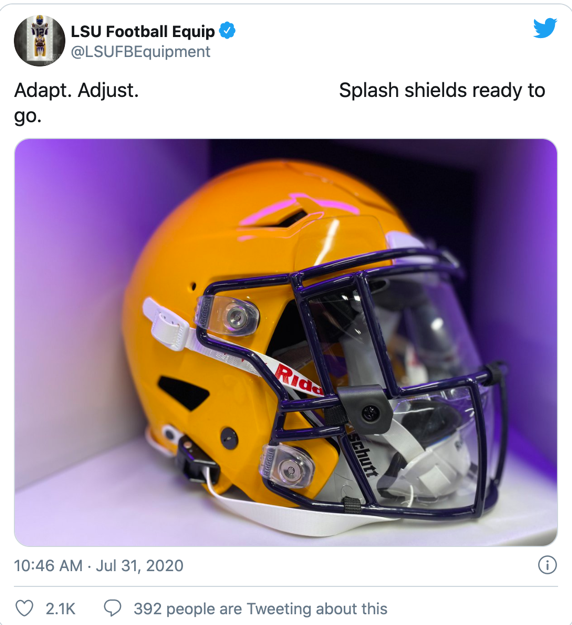
(Screenshot, Twitter)
Now people are snapping up tents, kayaks and trampolines
First came the shortage of bicycles as people rushed to buy bikes, any bikes. A couple of weeks ago I told you people were buying plastic swimming pools like crazy. Then came a hunger for people to buy boats with their vacation money.
Now people are buying camping gear. I hope there is money left over for marriage therapy, I am just saying.
When we started 2020, fewer than one in five Americans turned to the outdoors for fun once a week. Half of the U.S. population didn’t go outside for recreation at all, according to the Outdoor Industry Association. In fact, the last decade (until now) showed Americans playing outdoors less and less. “Americans went on one billion fewer outdoor outings in 2018 than they did in 2008,” the Outdoor Industry Association said.
Now, camping supply stores say they are running short on everything from tents to the food that backpackers want.
The Milwaukee Journal Sentinel heard from a local businessman that at first, the pandemic shut business down, then sales rocketed.
“We are on this crazy trajectory that we have never seen before. We just don’t know where it’s going,” said Bill Kueper, vice president of Wenonah Canoe, in Winona, Minnesota.
But now the Wenonah factory is so busy, there are weeks of orders on backlog. Maybe it’s pent-up consumer demand, or people desperately wanting to get outdoors, or the lifting of COVID-19 restrictions, but canoe and kayak makers are breathing a deep sigh of relief.
Kueper turned the company conference room into a “war room” stuffed with masks, gloves and other protective gear for employees. He’s been working on the factory floor himself, in addition to his regular job in the offices, but credits everyone else for the rebound in manufacturing.
Freeze-dried food and camp fuel suppliers, already cleaned out by prepper-minded customers months before, were confronted with “extraordinary levels of demand” from actual backpackers looking to escape into the wilderness. “It was whiplash.”
Mountain House, a popular freeze-dried food brand, has a warning on its website: “Due to increased demand, many of our products are out of stock.” An upscale competitor, Good To-Go, founded by the decorated chef Jennifer Scism and her husband, David Koorits, has paused sales through its website while it tries to catch up with orders from retailers. The company has increased its staff by more than 10%; after an early spring surge followed by a brief lull, August orders are five times what they were last year.
Some sought-after items suggest that people may also be camping in their own backyards. Hammocks, after a few mysteriously slow years, are back in high demand.
We’ll be back Monday with a new edition of Covering COVID-19. Sign up here to get it delivered right to your inbox.
Al Tompkins is senior faculty at Poynter. He can be reached at atompkins@poynter.org or on Twitter, @atompkins.


